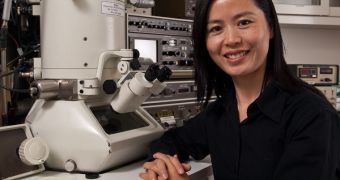For the first time ever, a team of experts at the US Department of Energy's (DOE) Lawrence Berkeley National Laboratory (Berkeley Lab) managed to develop a technique that allows them to observe as single copper sulfide nanocrystal undergoes structural transformation.
If these observations can be translated into a practical context, then scientists will soon be able to create a new breed of materials, to be used in the next generation of solar energy harvesting devices and energy storage devices such as batteries.
Berkeley Lab scientists are the first to conduct a direct observation of structural transformations within this material, which is billed as one of the most important semiconductors for future technologies.
The observations were conducted using one of the world’s most powerful transmission electron microscopes (TEM), called TEAM 0.5. The research group that managed the breakthrough was led by the director of the Berkeley Lab, Paul Alivisatos.
Basically, what the team did was observe as a single, nanoscale copper sulfide crystal transitioned between its low- and high-chalcocite solid-state phases. This could help reveal how ion transport occurs within electrodes during the charging/discharging cycle of a battery.
“TEAM 0.5, with its advanced electron optics and recording systems, enables rapid sample imaging with single atom sensitivity across the periodic table and greater collection efficiency,” the expert says.
“This provides extraordinary opportunities to study structural transformation dynamics in situ with atomic resolution,” Alivisatos adds. He explains that the dynamics of the change itself are strongly influenced by the amount and type of defects that exist in the nanorod crystal.
With the new data the team collected, it may become possible to suppress or assist such transformations in order to construct new material. Using new and controlled phases could lead to the development of materials that were not possible before.
“In nanoscale systems, the energetic barrier to a structural transformation scales with crystal size,” Alivisatos explains. His research was funded by the DOE Office of Science.
“When the size of a nanocrystal is in a regime where thermal energy is comparable to the energy barrier for phase transformation, fluctuations between two stable structures occur at the transition point, and are relevant to many molecular and solid-state phenomena near equilibrium,” he concludes.

 14 DAY TRIAL //
14 DAY TRIAL //